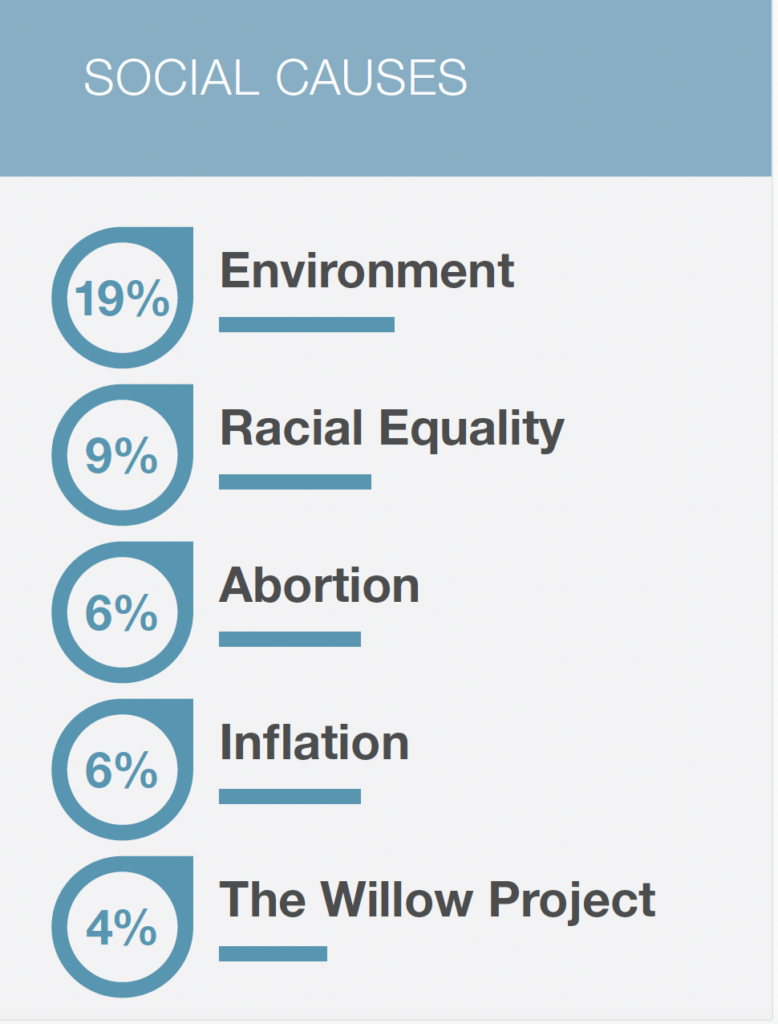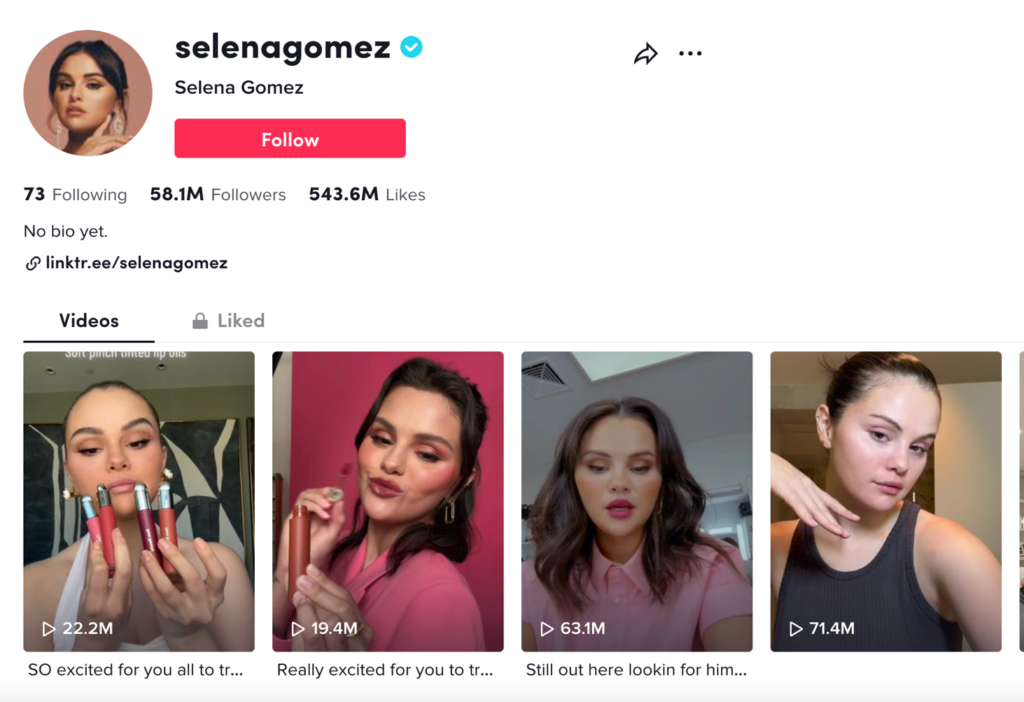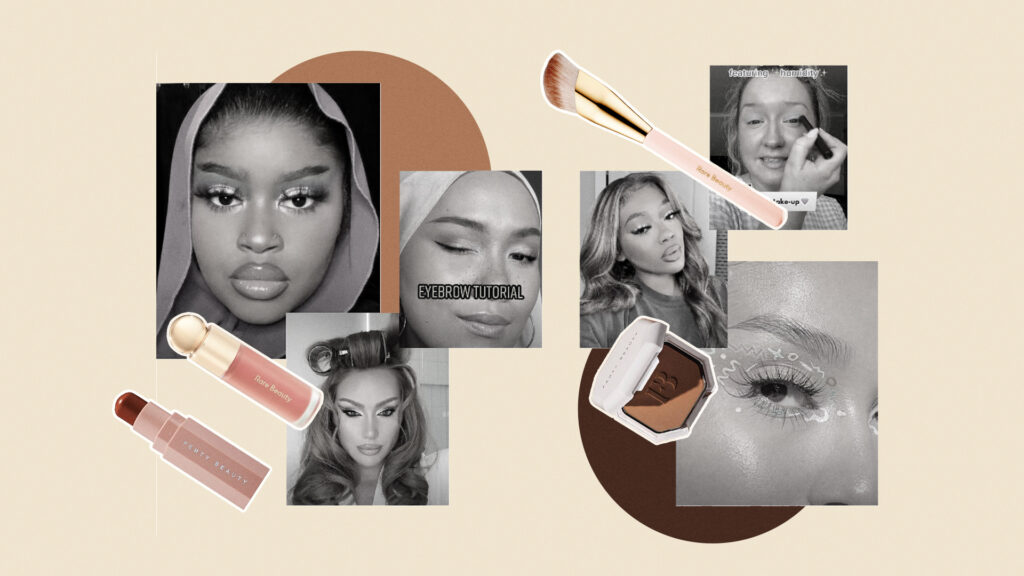For millions of fans, Selena Gomez is an icon of contemporary pop stardom—proudly Latina, openly embracing her “real stomach” and upfront about her mental health and body-shaming challenges, Gomez leverages authenticity effectively. For her brand, Rare Beauty, Gomez’s consistent messaging drives media value and boosts sales. The same could be said for Rihanna’s Fenty, which has helped transform the beauty industry with inclusive cosmetics. But according to a new report from Piper Sandler, the success of both lines reflects the power of retail’s most coveted demographic: Gen Z.
Gen Z’s Top Five Cosmetic Brands Are Mostly Cruelty-Free, Socially Conscious
According to the PiperSandler report, which surveyed 5,690 teens across 47 U.S. states, three out of five of Gen Z’s favorite cosmetic brands are cruelty-free and vegan. Two of the most famous—Rare Beauty and Fenty—are helmed by beauty icons who are outspoken on the topics Gen Z cares about.

The fact that e.l.f., Rare Beauty, and Fenty have woven eco-friendly and cruelty-free principles into their branding and made it prominent is not an accident. Recent research shows that Gen Z tends to shop according to their values, per the PiperSandler report, and ecological concerns dominate that list, along with inclusivity and abortion.

For brands seeking to connect with a generation through the media—signaling alignment with the topics they care about can easily increase brand engagement. In just two years, per Statista, Rare Beauty boasts 46 percent brand awareness among cosmetics users, compared with Fenty’s 53 percent. That’s significant, as Rihanna’s stardom easily eclipses that of Selena Gomez, but part of Rare Beauty’s appeal may be just that: Gomez’s deep investment in making Rare Beauty part of a personalized journey of self-discovery. For many Gen Z consumers, this may play as authenticity—something that major brands struggle with and often fail to create.
Gen Z Buys Based On Topics They Care About, On Recommendations From Influencers Who Represent Their Beliefs
There’s another reason why authenticity and connection via values make sense for brands. According to Nielsen, Gen Z is willing to change their buying habits to find products that reflect who they are and what they believe in. For Gen Z consumers, brands that reflect their values are more appealing than those that do not, even when the price comes into play. That trend appears to be global. A stunning 84 percent of Gen Z consumers stated that they buy brands based on their beliefs that the company is aligned with their values, according to a 2022 World Economic Forum Report. According to a recent Edelman study, 73 percent of Gen Z consumers only buy from brands they “believe in.”
Earned Media Delivers Awareness And Gen Z Engagement
According to Hootsuite, 83 percent of Gen Z stated that they shop on social media, and another 97 percent stated that social platforms are their top way to research shopping options. Entering Gen Z’s consumers’ social streams is a powerful way to drive brand awareness and translate that awareness into sales. And one simple way to do this is to connect with Gen Z around trending topics—or concerns—that provide an opportunity to showcase a product’s solution.
How Fenty Leveraged Earned Media
Fenty, launched in 2017, ushered in a new era of inclusive beauty products. For many makeup artists and consumers, the range’s now 50-plus shades demonstrated a familiarity with the diversity of ethnic skin colors that had been woefully absent in the industry for decades. That messaging translated into significant media coverage. As consumers’ social media posts praising the brand’s launch of a range of darker and medium to- shades that included a range of complex undertones rarely represented in other foundations gained traction, media outlets such as Vogue and Time Magazine incorporated consumer posts into new conversations about beauty inclusivity, untapped audiences, and ethnic representation in advertising. Fenty became the biggest beauty brand launch in history on YouTube in 2017, with 132 million views.
Why It Worked For Fenty
Social listening can yield powerful results for brands, from delivering powerful audience insights to amplifying brand recognition. Media outlets also practice social listening, so brand-linked trending topics can create new value through mass media coverage. In Fenty’s case, media coverage helped the new brand connect with audiences beyond its targeted demographic while introducing new insights that likely informed Fenty’s later expansion of its product line from an initial 40 foundation shades to 50. Fenty’s influence on beauty, inclusivity and representation in advertising is still quite strong, with publishers like Adweek and industry trade publications like The National Retail Federation’s blog highlighting the Fenty brand as a revolutionary force in beauty and advertising years after Fenty’s first Instagram post, even in absence of new product launches. Within the first six months, Fenty earned approximately $73 million in earned media value. Fenty garnered $100 million in sales within the first 40 days of its launch.
How Rare Beauty Leveraged Earned Media
While Gomez is a global star, Rare Beauty’s appeal might have been diluted by other cruelty-free, inclusive star-founded brands like Fenty. But Rare Beauty gained traction due to its strong influencer collaborations and its founder’s willingness to build the brand personally on platforms like TikTok while driving a public narrative around self-acceptance, independence, and inclusivity—values that, until relatively recently, were not the concepts most often associated with makeup brands. That shift in the national zeitgeist—towards brands that reflected the diversity and complexity of audiences—was seized upon by some of the most successful brands, led by Rare Beauty.

The Market Opportunity: Gen Z Is Spending More On Beauty, Despite Inflation Concerns
The Piper Sandler study found that Gen Z’s average spending on color cosmetics, skincare, and fragrance rose by 19 percent year-over-year to $313 annually. Color cosmetics spending, like lipstick, blush and foundation, rose by 32 percent year-over-year to $123, outpacing skincare for the first time since 2020.
That makes Rare Beauty’s influencer relationships, and Gomez’s willingness to walk the walk on social issues such as self-acceptance and body image key to Rare Beauty’s appeal to Gen Z. Earned media allows Rare Beauty to broadcast its brand messaging to millions while drawing audiences from multiple channels to social media spaces where it’s simple to click into a sales funnel.
For example, the brand’s collaboration with beauty influencer Nabela Noor highlighted the line’s inclusive foundation shade range while amplifying Rare Beauty’s message of celebrating diversity and self-love.

